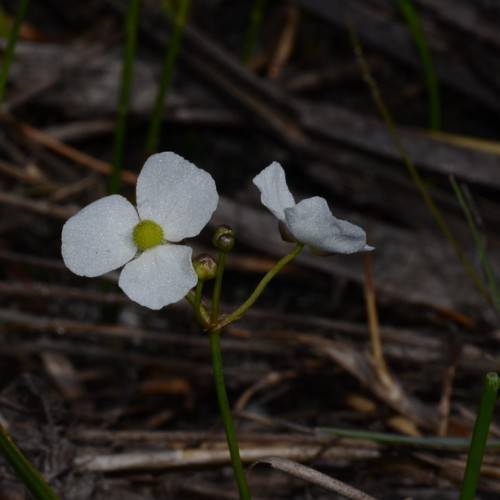
grassy arrowhead
Sagittaria graminea
Cycle:
Herbaceous Perennial
Watering:
Frequent
Hardiness Zone:
4 - 10
Flowers:
Flowers
Sun:
Full sun
Leaf:
Yes
Growth Rate:
Low
Maintenance:
Low
Drought Tolerant:
Yes
Salt Tolerant:
Yes
Care Level:
Medium
watering
Grassy arrowhead should be watered thoroughly and steadily on a regular basis. During active growth, water as often as necessary to keep the soil consistently moist to the touch – usually every 2-3 days. Before the next watering, make sure the top inch of soil is dry. During the summer, water more frequently – up to once a day, depending on the light levels and local temperature. In winter or when the plant is dormant, water much less often, giving the soil a chance to dry out between waterings.
sunlight
Grassy arrowhead (Sagittaria graminea) prefers full sun exposure when planted outdoors. It should be placed in an area that receives at least 6-8 hours of direct sunlight each day, although more sun is beneficial for optimum growth. It is particularly important that this plant receives sunlight early in the day, as this helps ensure that it has enough energy to last through the night. When planting indoors, make sure that the plant is located in a very sunny spot that is exposed to as much sunlight as possible. A south or east facing window or a sunroom is a perfect spot for grassy arrowhead.
pruning
Grassy Arrowhead should be pruned every 2 to 3 months to encourage healthy growth and remove dead foliage. Late spring or early summer is the best time to prune Grassy Arrowhead, as this is when the plant is actively growing. Pruning the plant regularly will make it bushier, more compact, and help promote a healthy crop of flowers. When pruning, cut back stems to just above the basal rosette (the leaves at the base of the plant). Also, remove any dead or damaged leaves and flower stalks. The process of pruning may seem intimidating, but it can be beneficial in the long run by helping the plant to grow fuller and more attractive.
